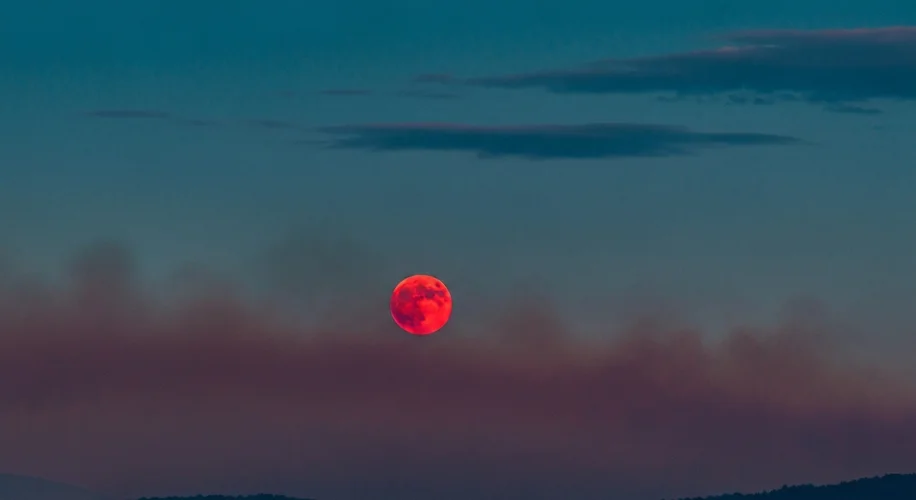Did you see the moon recently? On August 6th, 2025, a skywatcher in Canada shared a stunning image of the moon, glowing a deep, vibrant red. They rightly guessed that wildfire smoke was the culprit, turning our familiar celestial neighbor into what’s often called a ‘blood moon.’ It’s a phenomenon that might seem magical, but it’s rooted in solid atmospheric science.
So, how does smoke paint the moon red?
It all comes down to how light interacts with particles in the air. Sunlight is made up of all the colors of the rainbow. When sunlight travels through our atmosphere, it encounters tiny molecules and particles. These particles scatter the light. Shorter wavelengths, like blue and violet, are scattered more easily than longer wavelengths, like red and orange. This is why the sky typically appears blue during the day – the blue light is scattered all around us.
Now, think about wildfire smoke. Wildfires release a huge amount of smoke, which contains tiny particles. These particles are often larger than the air molecules we’re used to. When moonlight, which is reflected sunlight, passes through a sky thick with wildfire smoke, these smoke particles scatter the light in a similar way to atmospheric molecules. However, the size and composition of smoke particles can influence how light is scattered.
Specifically, larger smoke particles are very effective at scattering away the shorter, bluer wavelengths of light. This leaves the longer, redder wavelengths to pass through more directly. So, as the moonlight travels through the smoke-filled atmosphere, the blue and green light gets scattered out, and the red light continues on its path towards our eyes. The result? A moon that appears distinctly red or orange.
This isn’t a new phenomenon. Throughout history, volcanic eruptions and large wildfires have been known to cause spectacularly colored sunsets and moons. It’s a beautiful, albeit stark, reminder of the power of nature and the significant impact aerosols—tiny particles suspended in the air—can have on our visual perception of the world around us.
While the

